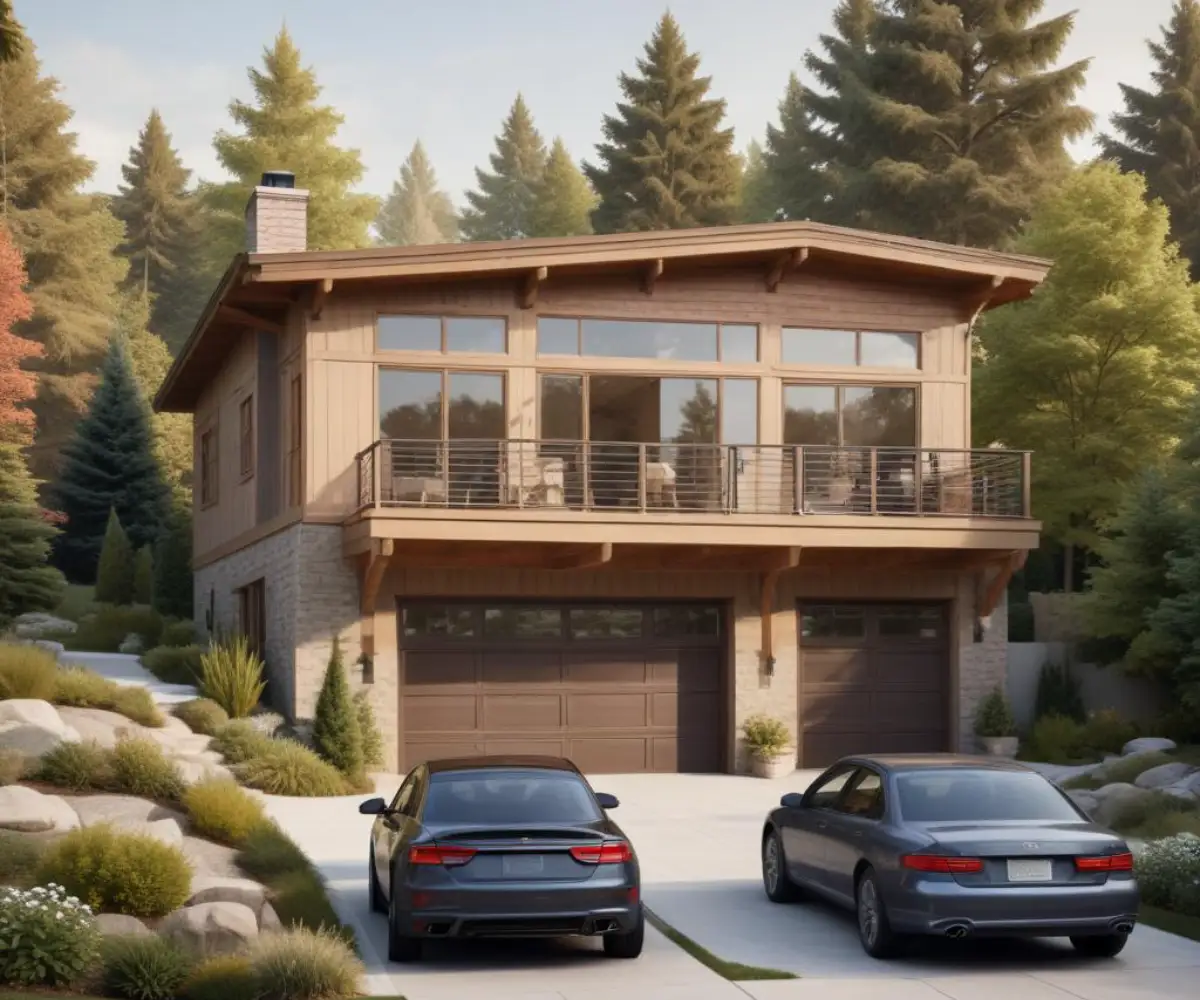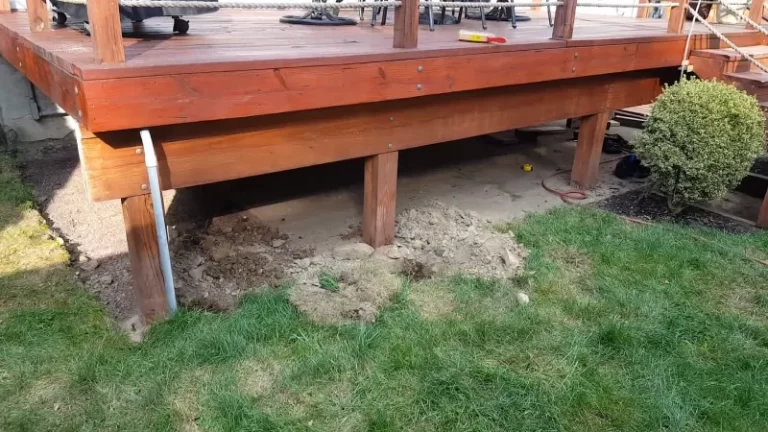Master Bedroom Above Garage: Your Ultimate Fix for the Unlivable Bonus Room
A master bedroom above the garage seems like a brilliant use of space, offering a private retreat separate from the main living areas. Yet, many homeowners discover this bonus room is often the most uncomfortable space in the house. It becomes an icebox in the winter and a sauna in the summer, plagued by noise and vibrations every time the garage door opens or closes.
These persistent issues can make the room nearly unusable, turning a dream master suite into a source of frustration. The good news is that these problems are entirely solvable. With the right approach, you can transform this challenging space into the comfortable, quiet sanctuary it was meant to be.
You'll Learn About
Why Your Bedroom Above the Garage Is So Uncomfortable
Understanding the root causes of the discomfort is the first step toward finding an effective solution. A room above a garage is uniquely exposed to the elements and structural noise in ways other rooms are not. This exposure creates a perfect storm of temperature, sound, and air quality issues.
The Great Temperature Divide: Heat Loss & Gain
The primary reason for extreme temperature swings is that the room sits directly above a large, unconditioned space. Garages typically lack the insulation found in the rest of a home’s foundation or lower levels. This means there’s nothing but a layer of drywall and floor joists separating your bedroom from the outdoor temperatures that permeate the garage.
In winter, heat from your bedroom escapes down into the cold garage, leaving your floors icy and the room chilly. In summer, the garage heats up like an oven, and that heat radiates upward, making the room above unbearably hot. An uninsulated garage door is a major weak point, acting as a giant thermal bridge that allows outdoor temperatures to flood the space.
The Noise Nightmare: Garage Doors and Street Sounds
Noise is another frequent complaint. The structure-borne vibrations from the garage door opener can travel directly through the floor joists and into your bedroom. This creates a low-frequency rumble and shaking that’s impossible to ignore, especially during late-night arrivals or early-morning departures.
Beyond the opener, the sound of the metal door moving along its tracks, coupled with noise from the street, tools, or cars, easily penetrates the uninsulated floor assembly. Without specific soundproofing measures, the floor does little to block this airborne and structural noise.
Unseen Annoyances: Vibrations and Air Quality
Less obvious but equally important are concerns about vibrations and air quality. The mechanical action of the garage door system sends vibrations through the home’s framing, which you can often feel in the room above. These constant minor tremors can be disruptive to sleep and overall comfort.
Furthermore, garages are home to cars, lawn equipment, and stored chemicals that can release volatile organic compounds (VOCs) and carbon monoxide. If the floor above the garage is not properly air-sealed, these harmful fumes can migrate into the living space, posing a significant health and safety risk.
The Ultimate Fix: Transforming Your Bonus Room into a Sanctuary
Creating a comfortable master bedroom above the garage requires a multi-faceted approach that addresses insulation, soundproofing, and HVAC separately. By tackling each of these core issues, you can create a complete thermal and acoustic barrier between your living space and the garage below.

Step 1: Supercharge Your Insulation Strategy
Insulating the floor is the single most important step you can take. The goal is to create a robust thermal envelope that isolates the room from the garage. Simply adding fiberglass batts is often not enough, as gaps and air leaks can compromise their effectiveness.
For superior performance, closed-cell spray foam insulation is the gold standard for this application. It expands to fill every crack and crevice, creating a powerful air and vapor barrier while offering a high R-value. Alternatively, dense-packing cellulose or using rigid foam boards in combination with batt insulation can also be highly effective. The key is to ensure complete coverage and eliminate any air gaps. Taking steps to improve your home’s thermal boundary, such as focusing on closet insulation, can contribute to overall energy efficiency and comfort.
Step 2: Winning the War on Noise
To effectively soundproof the floor, you need a strategy that addresses both airborne and impact noise. This involves adding mass, decoupling the drywall from the floor joists, and absorbing sound waves. A combination of materials often yields the best results.
Start by installing dense insulation like Rockwool between the floor joists, which is excellent for sound absorption. Then, consider adding a layer of mass-loaded vinyl (MLV) to the underside of the subfloor. For the best results, attach the garage ceiling drywall to resilient channels, which are metal tracks that decouple the drywall from the framing, stopping vibrations in their tracks. Upgrading to a belt-drive garage door opener will also significantly reduce mechanical noise at the source.
Step 3: Rethinking Your HVAC System
Rooms over the garage are often at the end of a long duct run, resulting in weak airflow and poor temperature regulation. Your home’s central HVAC system may not have the capacity to adequately heat and cool this isolated space. You have several options to correct this.
First, have an HVAC professional inspect the existing ductwork to ensure it is properly sized, sealed, and insulated. If that isn’t enough, installing a ductless mini-split system is an excellent solution. Mini-splits provide dedicated heating and cooling for a single zone, giving you precise temperature control independent of the rest of the house. They are incredibly efficient and can be installed with minimal disruption.
Advanced Solutions for a Flawless Finish
Once you have the fundamentals of insulation, soundproofing, and HVAC addressed, you can turn your attention to the finishing touches that elevate the room’s comfort and functionality. These advanced solutions ensure that no detail is overlooked in creating your ideal master suite.
The Flooring Factor: Beyond Just Carpet
Your choice of flooring can have a surprising impact on both sound and temperature. While carpet with a thick pad is a good choice for warmth and sound absorption, other options can also perform well. High-quality laminate or engineered hardwood installed over a premium acoustic underlayment can provide excellent sound-dampening properties.
Cork flooring is another fantastic option, as its natural cellular structure makes it an excellent insulator and sound absorber. Regardless of your choice, investing in a high-performance underlayment is crucial to minimizing sound transmission and providing a thermal break from the floor below.
| Problem Area | Good Solution (Budget-Friendly) | Better Solution (Effective) | Best Solution (Ultimate Comfort) |
|---|---|---|---|
| Insulation | Fiberglass or Mineral Wool Batts | Dense-Packed Cellulose | Closed-Cell Spray Foam |
| Soundproofing | Acoustic Insulation (Rockwool) | Insulation + Mass Loaded Vinyl (MLV) | Insulation + MLV + Resilient Channels |
| HVAC | Seal & Insulate Existing Ducts | Add Booster Fan to Ductwork | Install a Ductless Mini-Split System |
| Garage Door | Insulation Kit for Door Panels | Insulated Steel Door | Quiet Belt-Drive Opener + Insulated Door |
Ensuring Structural Integrity and Safety
Before beginning any major renovation, it’s vital to confirm that the garage’s existing structure can support a living space. A structural engineer should inspect the foundation and floor joists to ensure they can handle the additional weight. Building codes may require you to sister existing joists or add new ones to meet residential standards.
Safety is paramount, especially regarding fire separation and air quality. Building codes mandate a fire-rated drywall (Type X) on the garage ceiling and walls adjoining the house. It’s also critical to meticulously seal any penetrations—for wiring, plumbing, or ducts—between the garage and the bedroom with fire-rated caulk to prevent the passage of fumes and smoke. This process shares principles with finishing other areas of a home; if you’re undertaking a large project, understanding how to finish an unfinished room can provide a broader context for the work involved.
Is Building a Master Bedroom Above the Garage Worth It?
Adding a master suite above the garage can be a cost-effective way to gain valuable square footage without expanding your home’s footprint. It offers excellent privacy and can significantly increase your home’s market value. With careful planning and the right execution, it is absolutely worth the investment.
The key to success is treating the room as a complete system. By addressing insulation, soundproofing, and HVAC together, you can overcome the inherent challenges of this space. The result is a comfortable, quiet, and safe master bedroom that will feel like a true retreat for years to come.

